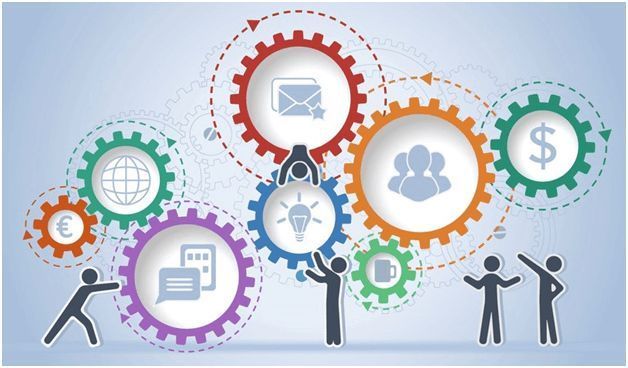10 Software Testing Trends to Watch Out for in 2019

With the usage of Agile and DevOps technology, the software business is undergoing major disruptions. This has lead to the growth of brand new testing procedures. The QA expert must rapidly adapt to the changes in the software app testing industry to remain in the cage.
Listed below is the list of Software application testing trends that you need to check out in 2019:
1. Digitization with Agile:
Companies are experiencing digital transformation since information has become invaluable in getting insights. The newest add-on for this tendency is that the adoption of an agile method to get a digital transformation. Agile methodology helps to align electronic conversion projects with business needs.
The team defines the company challenges, objectives and usage circumstances. From the agile approach, new features are all delivered with every sprint. As digital transformation is an ongoing process, agile helps deliver valuable effects usually for the company as opposed to waiting for quite a long moment.
2. Machine Learning and Testing:
- Machine-learning is attracting about radical changes in workflows and procedures. In testing, machine learning can be used to get:
- Evaluation test cases -- To identify redundantly and one of a kind evaluation instances.
- Predictive analysis -- To anticipate precisely the vital parameters of software testing procedures about the basis of historical statistics.
- Log Analytics -- To identify the evaluations cases that ought to get implemented automatically.
- Trace Ability -- Extracting keywords from Your Requirements Traceability Matrix (RTM) to reach examination policy.
- Defect Analytics -- To identify high-risk areas of the application form for its prioritization of regression test instances.

3. DevOps Adoption is increasing
In DevOps, the software testing process begins at the initial stage of the project cycle. This process approach facilitates Continuous Integration and also Carries on Delivery. This enables testers to follow Continuous testing approach along with Constant Tracking to confirm that the developers have assembled the correct web app. The functionality and functioning of the applying are tested regularly along with improvement.
The Quality assurance team contrasts the evaluation design, test automation, and test case development with DevOps not to just verify the signal varies however make certain that the alterations don't violate this product.
4. Big-data Testing
Big-data is the high amount of data generated at a higher speed. In big data testing, testers have to verify that terabytes of data are all successfully processed with cluster and also other supporting elements. Such testing centers around operation testing and functional testing.
The grade of information is also a critical component in big data testing. The quality of information is verified before the testing begins. The data quality is assessed on the basis of varied traits like conformity, accuracy, consistency, validity, information completeness, etc..

5. IoT Testing
There are more connected apparatus than before as IoT technology is gaining traction. IoT testing has been conducted to examine IoT technologies based apparatus. The Various Forms of analyzing for IoT methods are as follows:
- Usability Testing -- To test the usability of an IoT platform
- Compatibility Testing-- To check the compatibility of the apparatus in IoT system
- Dependability & Scalability Testing -- Cases of sensors utilizing virtualization Equipment
- Info Integrity testing-- To confirm the integrity of Information
- Authorization testing -- To validate the consumer authentication Procedure and information privacy controls
- Overall performance testing -- To examine the performance of the connected devices in an IoT system
6. Performance Engineering
Performance engineering is going to replace performance testing in 20-19. In place of executing performance test scripts, then the focus will likely be on assessing all the components of this system work together. The numerous elements of this machine include performance, security, usability, components, applications, configuration, business value and also the client.
The performance technology is about working and iterating on these things of maximum price and sending such items quickly to make sure a high-quality product. Performance technology will aid in surpassing client expectations in 2019.
7. Automation Testing
The test automation aids the testing professionals to concentrate their efforts and time to creating test scenarios as opposed to managing testing requirements. Test automation will help track and take care of all analyzing needs, the kinds of testing required together side the test policy. Test automation helps ensure high- quality applications is currently delivered.
Particular tools have been used to control the implementation of evaluations to further review the actual results against the anticipated benefits. Mainly the regression evaluations that need repetitive actions are more automated. Automation tools are useful for both functional and non-invasive testing.

8. Manual & Automated Testing combination
An increasing number of quality assurance specialists are now employing a mix of manual and automated testing approaches to exploit the advantages of both types of testing as well as to overcome their individual openings. The handbook testing continues to be dominating the testing market. Although automated testing brings about efficiency from the testing method there are still definite areas like usability and design that necessitates manual efforts.
9. Shortening Delivery Cycle
Rapid shifts in platforms, technologies, and devices are putting pressure on software growth organizations to successfully supply the finished products more quickly and a lot more frequently. Testing needs to become incorporated with improvement to ease shipping. Software associations are prepared to get far more in improving their delivery and development procedures using the ideal pair of technology. The need for evaluation management applications may increase to coincide upward with shortening delivery cycles.
10. Pairing
With shortening shipping cycles, there is a larger need for integration of many different elements of an element improvement. To facilitate smart analytics and testing, the data can be accumulated from disparate sources such as demand direction systems, modify management methods, task management systems, and also test atmosphere. This involves there is a need for integral programs which aid in demand direction, labour management, pest monitoring, and evaluation administration.

Conclusion
To keep in front of this curve, the QA pros' needs to stay updated on the latest testing styles. The only means to be more resistant to the disruptions from the applications market is to prepare for future years.
Similar Articles
Decentralized Finance (DeFi) has transformed how users earn passive income through blockchain-based financial systems. Among its most popular use cases,
Staying organized can feel like a full-time job. Between meetings, deadlines, and personal commitments, it’s easy to get overwhelmed.
Choosing the right GIS mapping software depends on what you need to accomplish. Some platforms cater to developers who want to build custom applications from scratch.
For data intensive industries such as insurance, the global business landscape is undergoing a profound transformation. Thanks to all the relentless technological innovation, this shift presents both significant challenges and unparalleled opportunities for modernization of the insurance sector.
Organizations are always looking for newer technologies to aid their operations. So, this hunt revolves around solutions that offer not only agility and scalability but are also cost-effective.
Not long ago, the idea of multiple AI agents working together, each with a specific role, collaborating to solve problems, felt like science fiction.
In today’s data-driven world, choosing the right business intelligence (BI) platform can make or break your organization's analytics success.
We all know that companies today are no longer limited to a single physical location. Work processes are also no longer strictly isolated.
It is neither secret nor news that the mind-boggling pace of digital transformation around us has totally altered consumer expectations.










